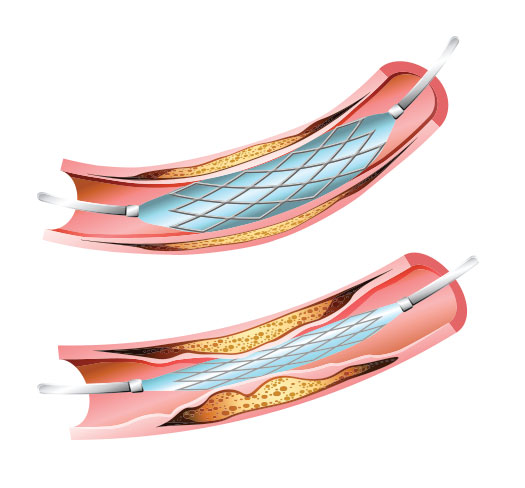-
Products
-
- Featured Products
- Supraflex Cruz
-
- Professionals
- Patients & Caregivers
- Investors
- About SMT
Main navigation
How is it performed?
- The procedure may be performed through either the groin area or wrist. The operator will inject anaesthesia to numb this area and then insert a catheter. A catheter is a small thin and hollow tube that is inserted into blood vessels.
- The catheter is guided into the blood vessel system towards the opening of the blocked blood vessel of the heart.
- With help of an imaging tools, the operator guides the catheter into the blocked blood vessel. Next, a very thin wire called a guide wire is passed through the catheter across the blockage. This guide wire guides a catheter with a thin inflatable balloon towards the blockage.
- The balloon is inflated. When it is inflated it pushes the plaque towards the side, against the walls of the blood vessel. This stretches the artery to its normal size and restores normal blood flow. The inflation of the balloon can be performed more than once.
- The balloon catheter is then removed and the stent delivery system is introduced.
- The stent is then placed at the narrowed region of the artery. It is pushed against the walls of the blood vessel. It acts as a permanent support to keep the blood vessel open.
- The balloon is then deflated and removed from the blood vessel along with the guide wire and catheter.

- Stent placement is a minimally invasive procedure
- General anaesthesia is not required
- No major complication occur
- Fast recovery
- Heart attack, stroke, and sudden cardiac death
- Narrowing of the artery
- Formation of blood clots
- Bleeding from the puncture site
- Damage to the blood vessel due to the catheter and other instruments
- The dye may cause damage to the kidneys
- Allergic reactions due to the dye
- Infection at the puncture site


